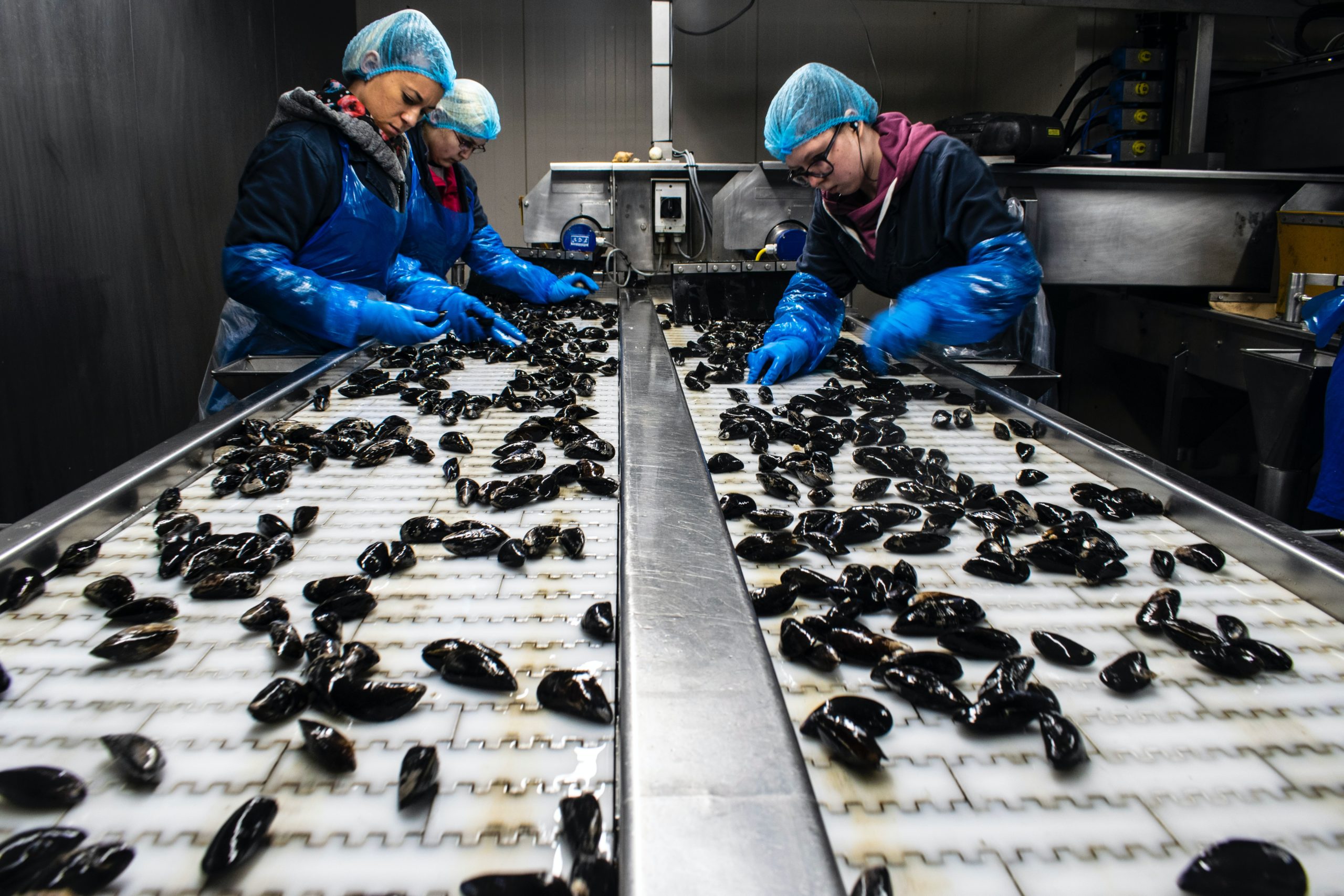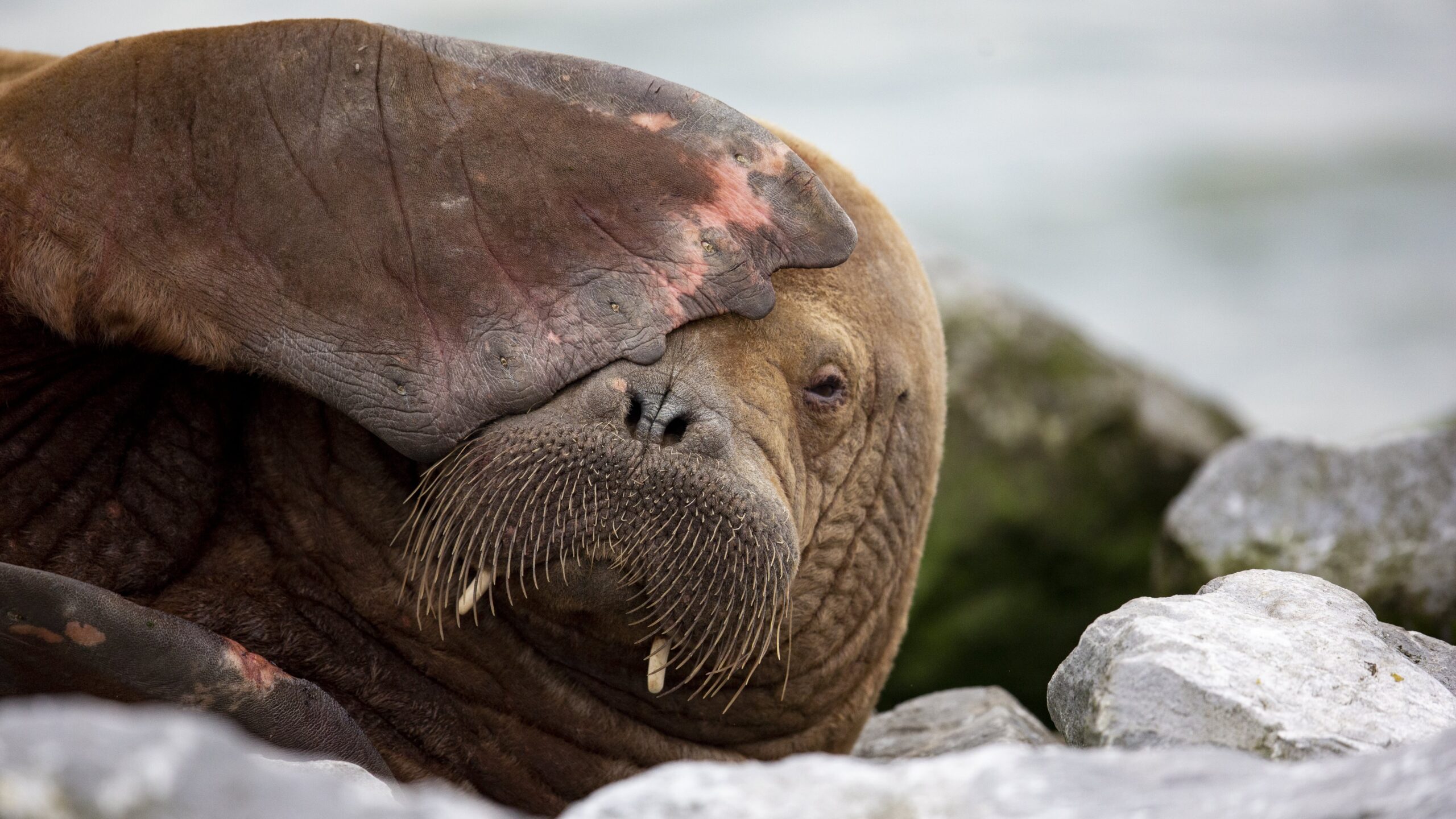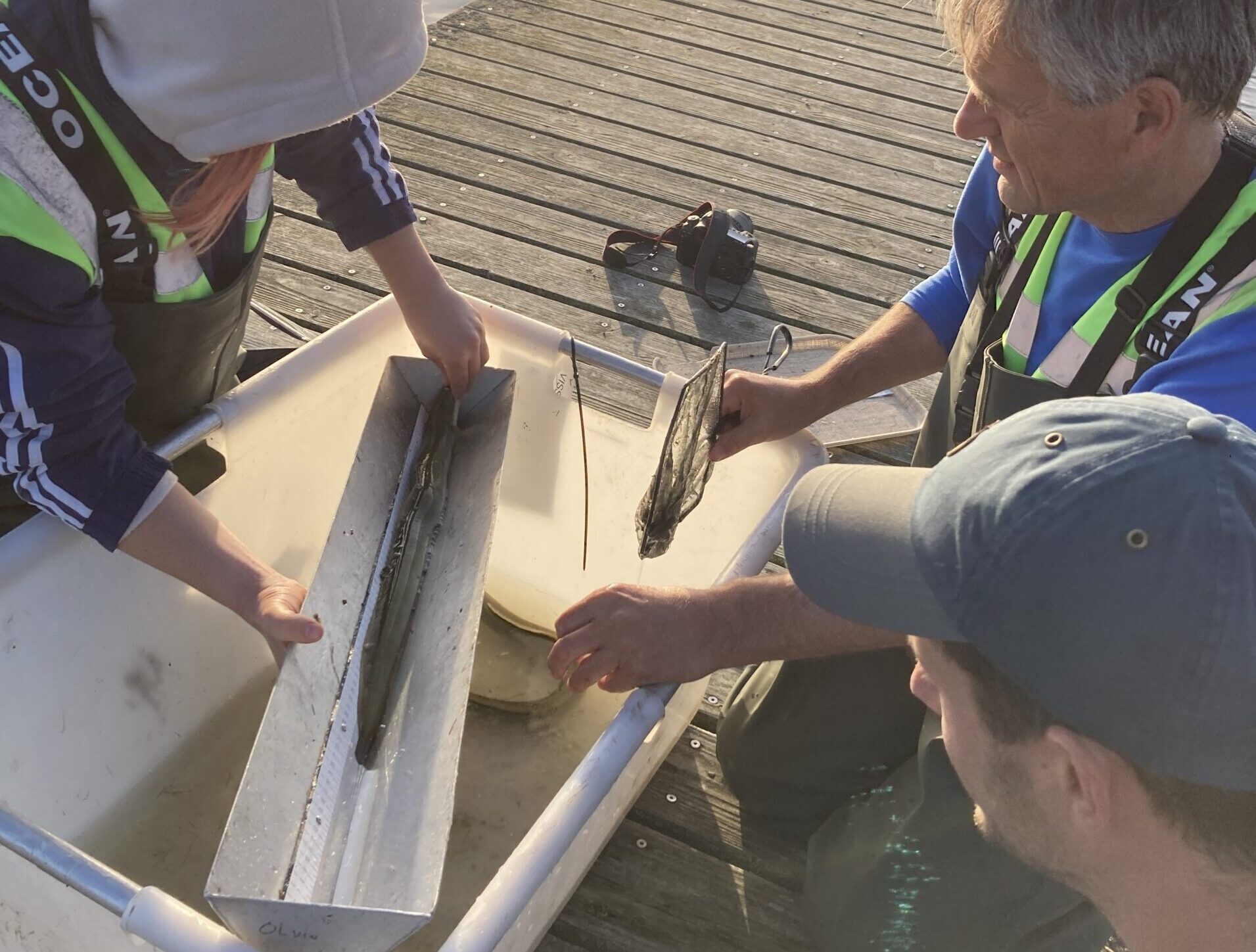Last week the mussel season was officially opened. Who or what determines how the mussels are currently doing? Resource asked Nathalie Steins, a researcher and project manager for Wageningen Marine Research.
According to vismagazine.nl, breeders in Zeeland are enthusiastic about the quality of “their” mussels this season. The mussels are rich, of good colour and with a meat percentage of 27 per cent or higher. Do these factors determine whether the season can be opened? ‘That is the way it used to be’, says Steins. ‘Similar to how new herring must have a certain fat percentage, a minimum meat percentage was required for mussels. When the mussels for the Dutch market were exclusively farmed in the Waddenzee, this was sometimes an issue. Currently, however, “our” mussels are also acquired from other European countries, such as Ireland, England and Germany. Thus, mussels of sufficient quality are available early on in the season. The opening of the mussel season is now mostly a ceremonial and promotional activity.’
Recovery
The precise moment the season is opened is not relevant for the preservation of the species. The mussel is doing very well at this moment, Steins states. This has not always been the case. Previously, some 2000 to 4000 hectares of mussel banks were located in the Wadden Sea. With the Wadden drying up, these mussel banks disappeared almost entirely in the nineties due to the sum of natural factors in the intensive mussel fisheries: too little seed ‘dropped’. At the same time, fishers still loaded their cargo hulls to the brim to sow the breeding fields.
A new policy was to turn the tide. The drying plates were closed to mussel fishers in stages, and the fishers were faced with strict management. The policy was effective. Steins: ‘On average, the former acreage has been restored. My colleague Karin Troost published about it recently: if these areas are left alone, depleted mussel banks return naturally.’
On average, the former acreage has been restored
Agreements have been made to reduce mussel fishing on submerged banks. Nature organisations want all wild mussel banks to remain undisturbed as much as possible. In approximately half of these so-called ‘wet banks’, the mussel seed is extracted by fishers, and the other half is removed through capturing installations in the water column. ‘These installations work well; they capture sufficient mussel seeds from the water column and ensure a continuous supply. One of the advantages is that seed is also captured during periods when there is not much seed on the banks themselves,’ says Steins. The only drawback is the price, seed obtained by the installations is much more expensive.
Mussel monitoring
Wageningen Marine Research will conduct a new inventorying round this fall as part of its statutory research tasks. Steins: ‘We do this annually and have been doing so for many years. We have a timeline from 1990 with the largest number of sampling locations in the Wadden Sea. We inventory the number of mussels on dry plates and in the wild areas under water. We check how much mussel seed is available and how much fishing can be done on the wet banks. Based on our inventory, the product organisation draws up a fishing plan.’ WMR also maps the acreage of dry mussel banks. This does not, however, impact fisheries, as these areas are already off-limits.
Knowledge about mussels
Through the years, Wageningen Marine Research has done ample research on the (ecological) impacts of mussel breeding. The main insights are presented in this interactive PDF. The latest records on mussels can be accessed through the crustacean monitor: schelpdiermonitor.
Small footprint
Stein has good news for the conscientious consumer: ‘Should you wonder whether you can eat mussels with all the overfishing going on, the answer is yes, no problem’. She adds: ‘In the Netherlands, there are solid agreements that protect the Wadden Sea. The agreements basically entail that the whole process of fishing for seed, breeding and removing mussels may never lead to a reduction in the number of mussels the Wadden Sea would have had if there was no mussel fishing at all.’
If people want to eat animal-based proteins, mussels or oysters are the best choices for a smaller ecological footprint
Is modern mussel farming an example of how humans can eat from the sea responsibly, in harmony with the ecology? ‘If done correctly, yes’, she underscores. ‘In the nineties, things were obviously not going well, but new insights were achieved since then, and the mussel fisheries are properly managed now.’ The ecological footprint of the mussels from the Wadden Sea is also small and has the FSC label, Steins says. ‘If people want to eat animal-based proteins, for example, because they are unable or unwilling to switch to a plant-based diet, mussels or oysters are the best choices for a smaller ecological footprint according to international research.’
farming in offshore wind parks
‘We are checking what options this offers. Hopefully, a pilot project will start this year in the Voordelta to see if mussels can be bred hanging in the sea rather than on the seabed. The main question is whether this is technically feasible because the North Sea is rough due to its many storms. A complicating factor is that the locations where wind parks are placed do not necessarily have the best growing conditions for mussels. And then, there are the safety guidelines in the wind parks that make breeding difficult. But, in light of the discussion on animal-based proteins -how much does the growing global population need, and where can we get that?- the sector is willing to see whether breeding mussels in the North Sea wind parks is an option,’ says Steins.

 Zeeland breeders hope to match last season’s sales of just under 34 million kilos. Photo Paul Einerhand via Unsplash
Zeeland breeders hope to match last season’s sales of just under 34 million kilos. Photo Paul Einerhand via Unsplash 

